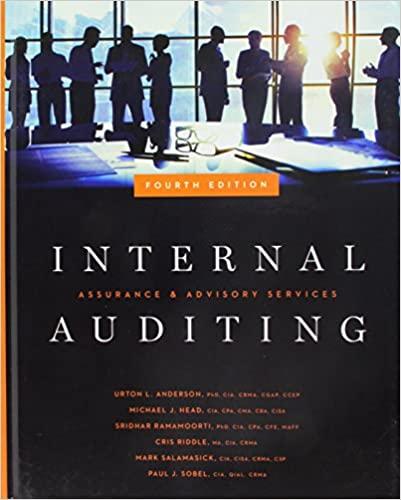During Year 2, Campbell Manufacturing Company incurred $108,000,000 of research and development (R\&D) costs to create a longlife battery to use in computers. In accordance with FASB standards, the entire R\&D cost was recognized as an expense in Year 2. Manufacturing costs (direct materials, direct labor, and overhead) are expected to be $54 per unit. Packaging. shipping, and sales commissions are expected to be $15 per unit. Campbell expects to sell 2,400,000 batteries before new research renders the battery design technologically obsolete. During Year 2, Campbell made 446,000 batteries and sold 397,000of them. Required a. Identify the upstream and downstream costs. b. Determine the Year 2 amount of cost of goods sold and the ending inventory balance that would appear on the financial statements that are prepared in accordance with GAAP. c. Determine the sales price assuming that Campbell desires to earn a profit margin that is equal to 25 percent of the total cost of developing, making, and distributing the batteries. d. Prepare a GAAP-based income statement for Year 2. Use the sales price developed in Requirement c. Complete this question by entering your answers in the tabs below. Identify the upstream and downstream costs. During Year 2, Campbell Manufacturing Company incurred $108,000,000 of research and development (R\&D) costs to create a longlife battery to use in computers. In accordance with FASB standards, the entire R\&D cost was recognized as an expense in Year 2. Manufacturing costs (direct materials, direct labor, and overhead) are expected to be $54 per unit. Packaging, shipping, and sales commissions are expected to be $15 per unit. Campbell expects to sell 2,400,000 batteries before new research renders the battery design technologically obsolete. During Year 2, Campbell made 446,000 batteries and sold 397,000of them. Required a. Identify the upstream and downstream costs. b. Determine the Year 2 amount of cost of goods sold and the ending inventory balance that would appear on the financial statements that are prepared in accordance with GAAP. c. Determine the sales price assuming that Campbell desires to earn a profit margin that is equal to 25 percent of the total cost of developing, making, and distributing the batteries. d. Prepare a GAAP-based income statement for Year 2. Use the sales price developed in Requirement c. Complete this question by entering your answers in the tabs below. Determine the Year 2 amount of cost of goods sold and the ending inventory balance that would appear on the financial statements that are prepared in accordance with GAAP. During Year 2, Campbell Manufacturing Company incurred $108,000,000 of research and development (R\&D) costs to create a longlife battery to use in computers. In accordance with FASB standards, the entire R\&D cost was recognized as an expense in Year 2. Manufacturing costs (direct materials, direct labor, and overhead) are expected to be $54 per unit. Packaging, shipping, and sales commissions are expected to be $15 per unit. Campbell expects to sell 2,400,000 batteries before new research renders the battery design technologically obsolete. During Year 2, Campbell made 446,000 batteries and sold 397,000 of them. Required a. Identify the upstream and downstream costs. b. Determine the Year 2 amount of cost of goods sold and the ending inventory balance that would appear on the financial statements that are prepared in accordance with GAAP. c. Determine the sales price assuming that Campbell desires to earn a profit margin that is equal to 25 percent of the total cost of developing, making, and distributing the batteries. d. Prepare a GAAP-based income statement for Year 2. Use the sales price developed in Requirement c. Complete this question by entering your answers in the tabs below. Determine the sales price assuming that Campbell desires to earn a profit margin that is equal to 25 percent of the total cost of developing, making, and distributing the batteries. (Do not round intermediate calculations. Round your final answer to 2 decimal places.) During Year 2, Campbell Manufacturing Company incurred $108,000,000 of research and development (R\&D) costs to create a longlife battery to use in computers. In accordance with FASB standards, the entire R\&D cost was recognized as an expense in Year 2. Manufacturing costs (direct materials, direct labor, and overhead) are expected to be $54 per unit. Packaging, shipping, and sales commissions are expected to be $15 per unit. Campbell expects to sell 2,400,000 batteries before new research renders the battery design technologically obsolete. During Year 2. Campbell made 446,000 batteries and sold 397,000 of them. Required a. Identify the upstream and downstream costs. b. Determine the Year 2 amount of cost of goods sold and the ending inventory balance that would appear on the financial statements that are prepared in accordance with GAAP. c. Determine the sales price assuming that Campbell desires to earn a profit margin that is equal to 25 percent of the total cost of developing. making, and distributing the batteries. d. Prepare a GAAP-based income statement for Year 2. Use the sales price developed in Requirement c. Complete this question by entering your answers in the tabs below. Prepare a GAAP-based income statement for Year 2. Use the sales price developed in Requirement c. (Do not round intermediate calculations.)










